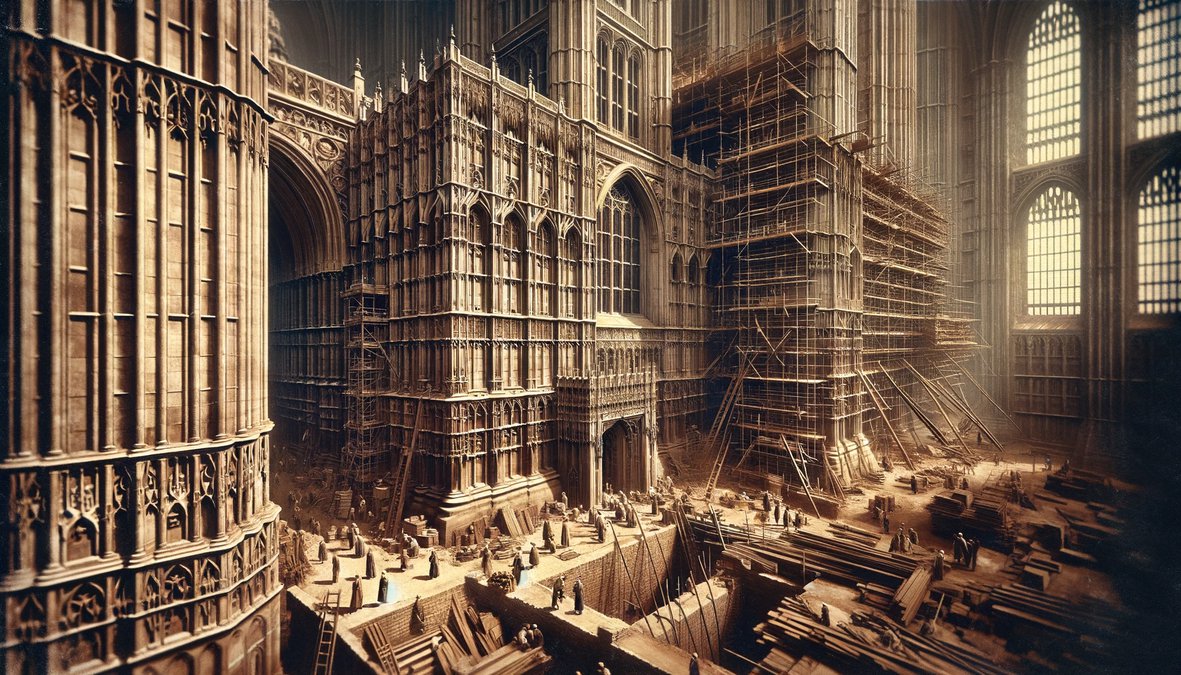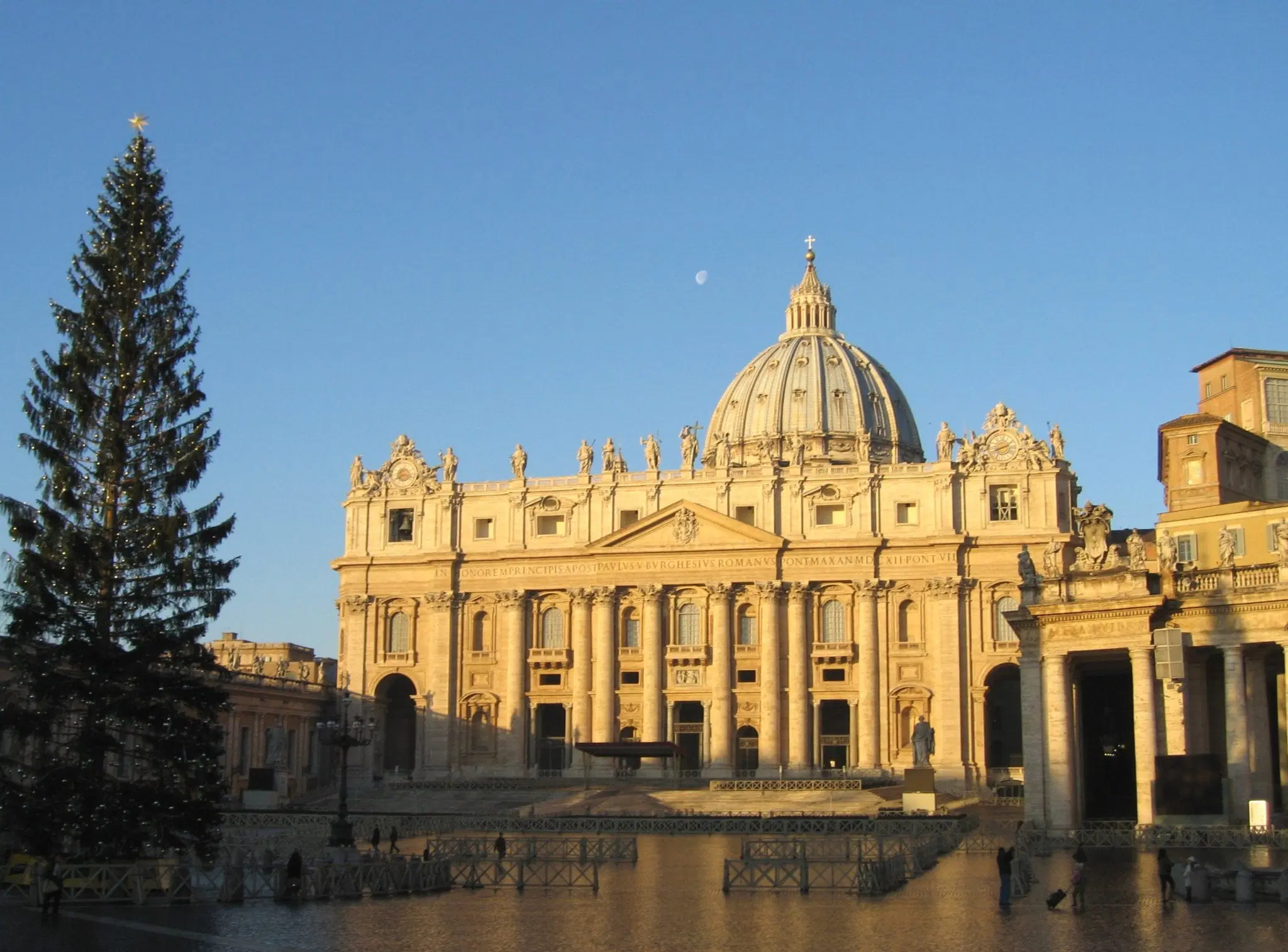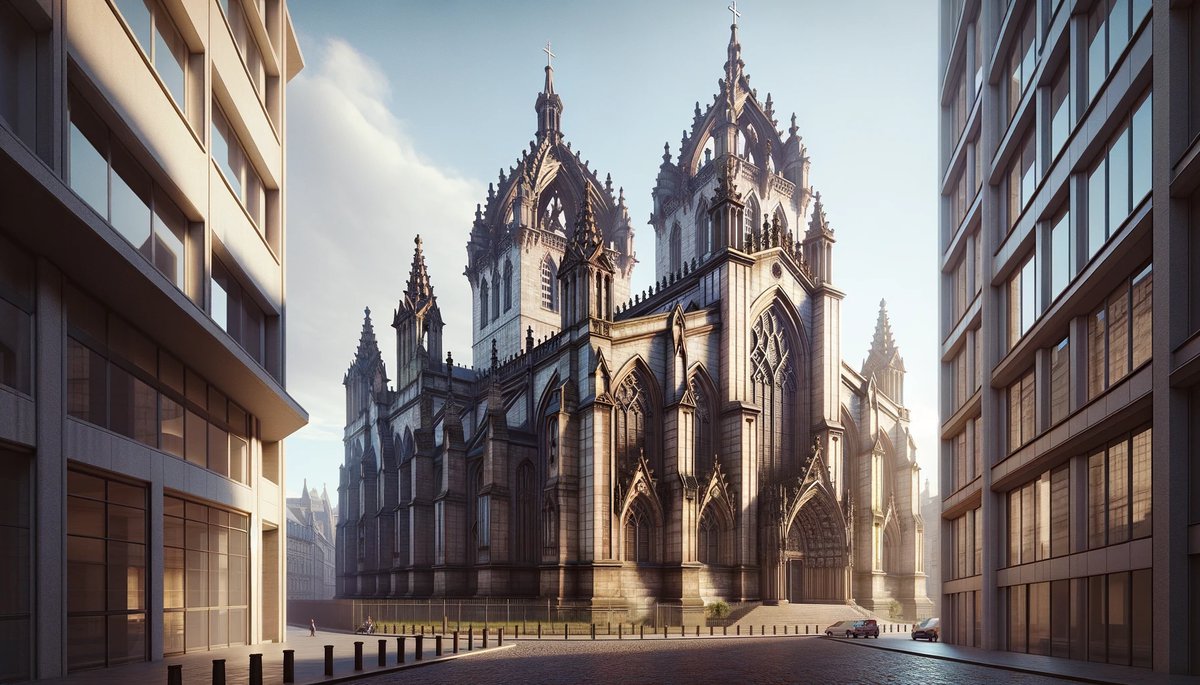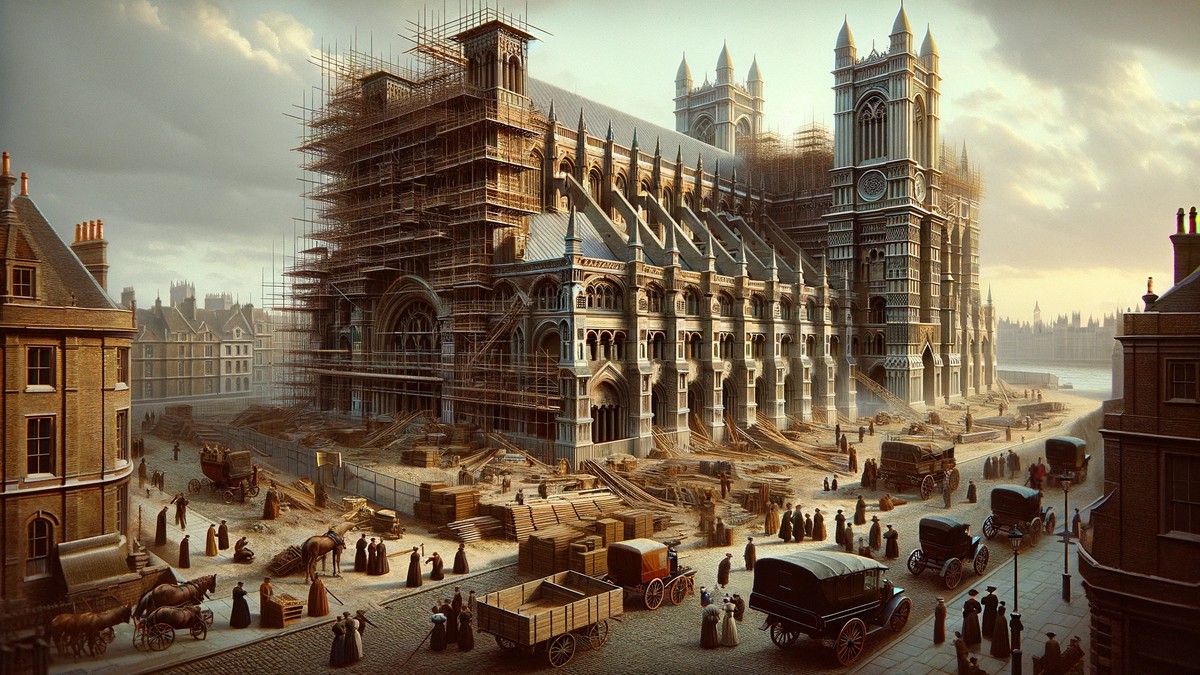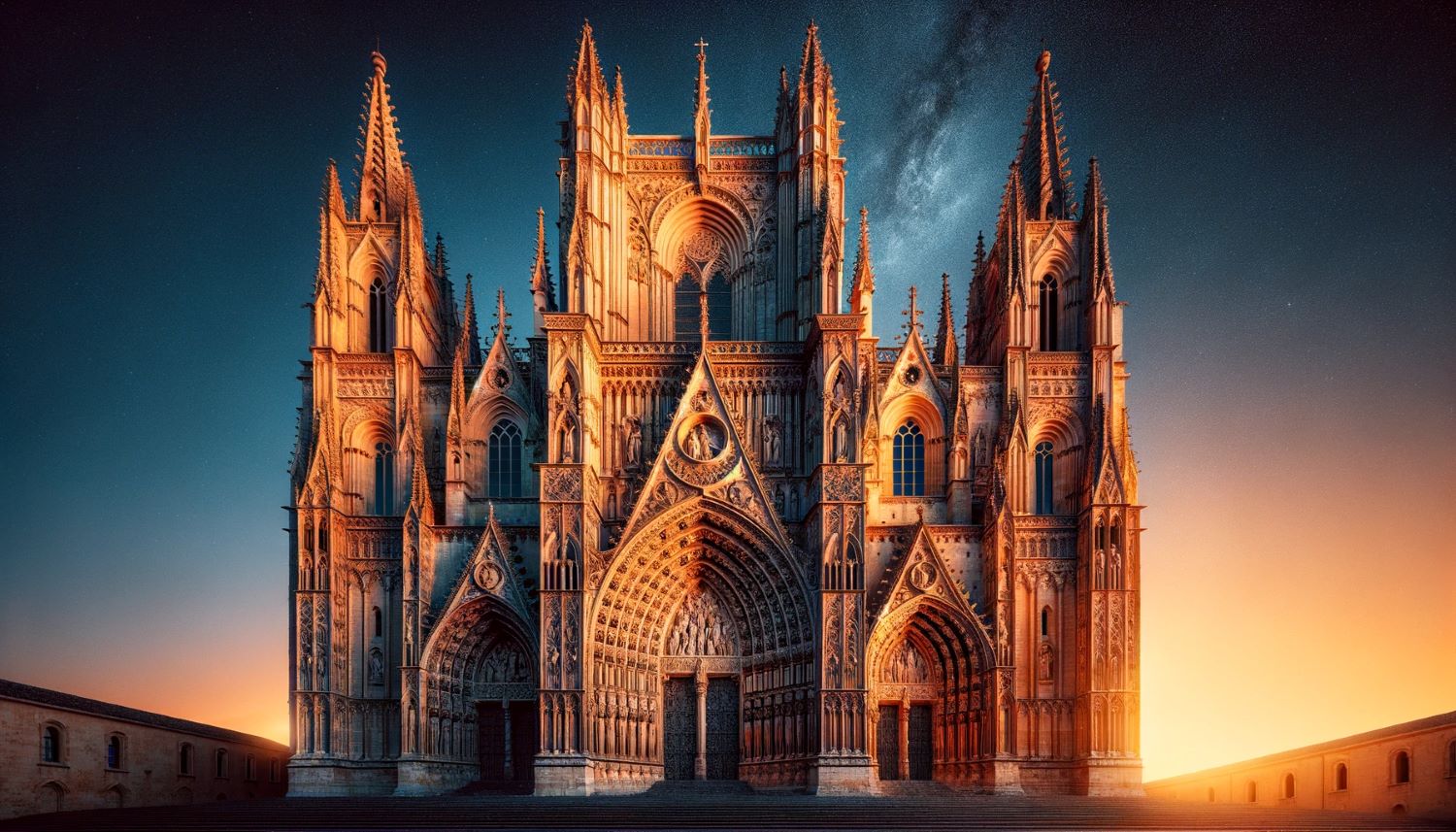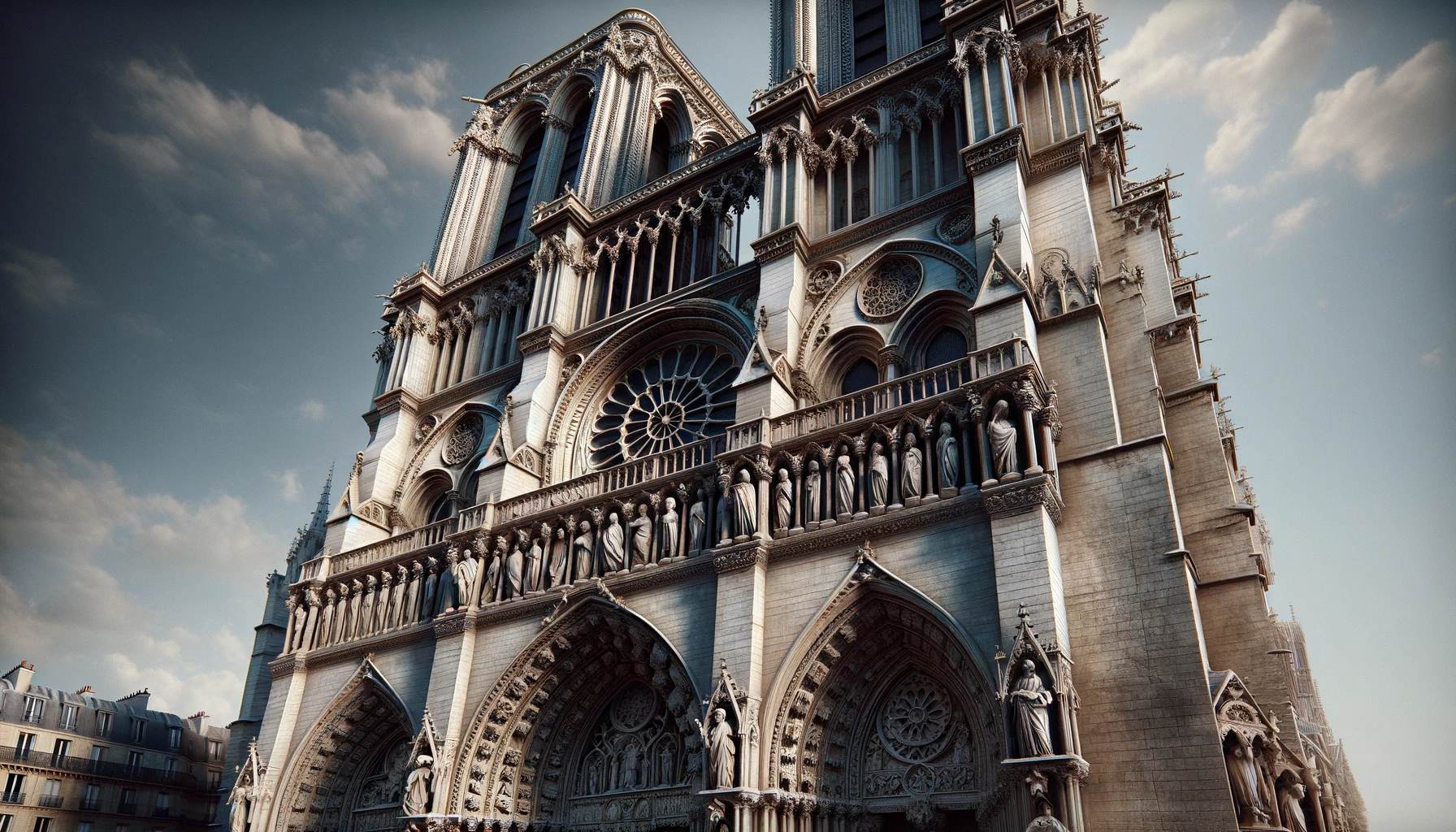Home>Arts and Culture>How Old Is St. Vitus Cathedral
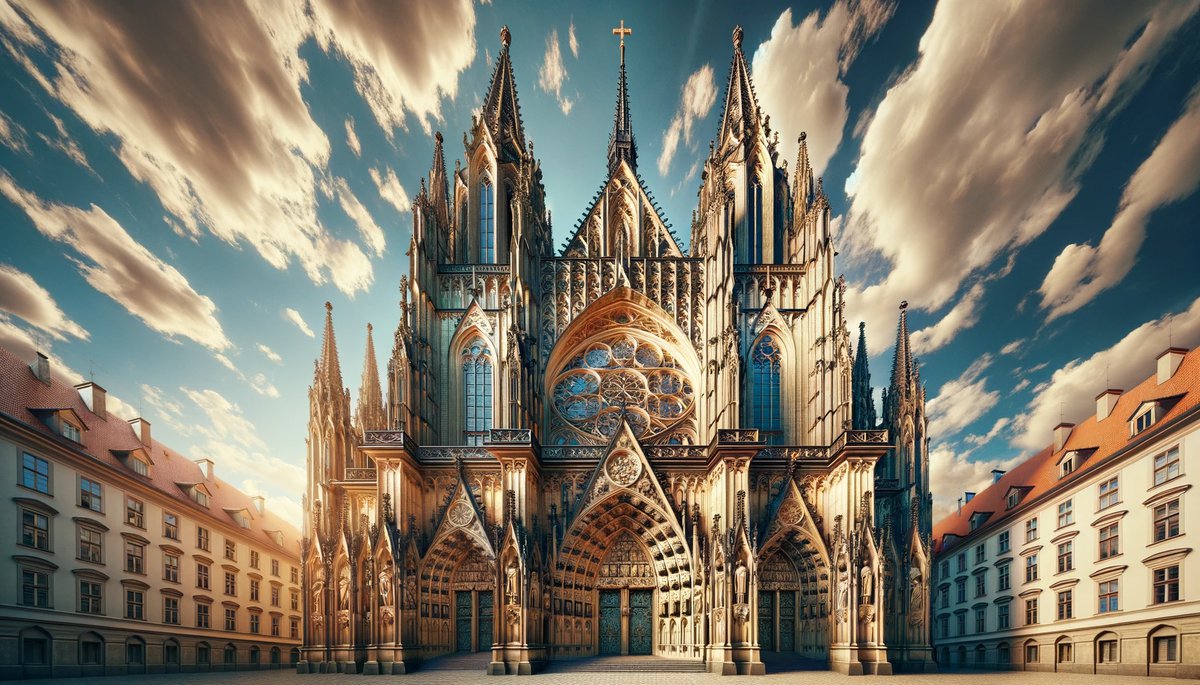

Arts and Culture
How Old Is St. Vitus Cathedral
Published: February 19, 2024
Ericka Andersen, an editor at Christian.net, expertly merges digital strategy with content creation, focusing on faith and societal issues. Her communication skills enhance the platform's engaging narratives, fostering meaningful dialogue on belief's impact on society.
Discover the rich history and age of St. Vitus Cathedral, a masterpiece of arts and culture. Uncover the secrets of this iconic architectural marvel.
(Many of the links in this article redirect to a specific reviewed product. Your purchase of these products through affiliate links helps to generate commission for Christian.net, at no extra cost. Learn more)
Table of Contents
Introduction
St. Vitus Cathedral, an awe-inspiring masterpiece of Gothic architecture, stands as a symbol of Prague's rich history and cultural heritage. This magnificent cathedral, nestled within the walls of Prague Castle, has been a witness to centuries of events, serving as a testament to the city's enduring legacy.
With its soaring spires and intricate façade, St. Vitus Cathedral commands attention, drawing in visitors from around the world to marvel at its grandeur. The cathedral's significance extends beyond its architectural splendor, as it holds a profound religious and cultural importance for the Czech people.
As we delve into the history, construction, and architectural features of St. Vitus Cathedral, we will uncover the stories and craftsmanship that have shaped this iconic structure. Moreover, we will explore the cathedral's enduring significance and the impact it has had on Prague's cultural landscape. Join us on this journey through time and artistry as we unravel the mysteries and marvels of St. Vitus Cathedral.
Read more: How Old Is St. Anne’s Cathedral, Belfast
History of St. Vitus Cathedral
St. Vitus Cathedral, also known as the Metropolitan Cathedral of Saints Vitus, Wenceslaus, and Adalbert, has a rich and storied history that intertwines with the cultural and religious tapestry of Prague. The origins of this architectural marvel can be traced back to the 10th century when Duke Wenceslaus I of Bohemia founded a Romanesque rotunda on the site where the present-day cathedral stands. This early structure served as a place of worship and a testament to the burgeoning Christian faith in the region.
However, it was not until the 14th century that the construction of the current Gothic cathedral began in earnest. The impetus for this ambitious project came from Charles IV, the Holy Roman Emperor and King of Bohemia, who sought to elevate Prague to the status of a major European capital. Under his patronage, the cathedral was envisioned as a grand symbol of the city's prestige and a testament to the power and influence of the Bohemian Kingdom.
The construction of St. Vitus Cathedral spanned several centuries, enduring periods of interruption and revival. The cathedral's intricate design and ornate details reflect the evolving architectural styles and the craftsmanship of the artisans who dedicated their lives to its creation. The cathedral's history is also marked by significant events, including the fire that damaged the roof in the 16th century and the subsequent restoration efforts that preserved its splendor for future generations.
Throughout the centuries, St. Vitus Cathedral has borne witness to pivotal moments in Czech history, from royal coronations to religious ceremonies and national celebrations. Its significance transcends mere architectural grandeur, as it has become a symbol of national identity and a source of pride for the Czech people.
Today, St. Vitus Cathedral stands as a living testament to the enduring legacy of Prague, embodying the spirit of artistic innovation and cultural resilience. Its history is a testament to the unwavering dedication of those who contributed to its construction and preservation, ensuring that it continues to inspire awe and reverence in all who behold its majestic beauty.
Construction of St. Vitus Cathedral
The construction of St. Vitus Cathedral stands as a testament to the enduring dedication and artistic vision of generations of craftsmen and artisans. Initiated in the 14th century under the patronage of Charles IV, the cathedral's construction spanned several centuries, reflecting the evolution of architectural styles and the unwavering commitment to realizing a grand symbol of Prague's cultural and religious significance.
The cathedral's design, characterized by the soaring spires and intricate tracery, embodies the pinnacle of Gothic architecture. The project attracted master builders and artisans from across Europe, each contributing their expertise to bring Charles IV's vision to life. The meticulous planning and execution of the cathedral's construction resulted in a structure that continues to inspire awe and admiration to this day.
One of the most remarkable aspects of the cathedral's construction is the attention to detail evident in its ornate façade and interior. The intricate stone carvings, stained glass windows, and imposing buttresses showcase the mastery of the craftsmen who dedicated themselves to adorning the cathedral with unparalleled beauty. The construction of St. Vitus Cathedral was not merely a feat of engineering; it was a labor of love and devotion to the ideals of faith and artistic expression.
Despite facing numerous challenges, including fires and periods of political upheaval, the construction of the cathedral persevered, driven by the unwavering determination to create a monument that would stand the test of time. The cathedral's construction became a reflection of the resilience and ingenuity of the human spirit, transcending the limitations of its era to become a timeless symbol of cultural and architectural excellence.
As the construction of St. Vitus Cathedral neared completion in the 19th century, subsequent restoration efforts ensured that its original splendor was preserved for future generations to behold. The dedication of preservationists and conservationists underscored the cathedral's enduring significance, cementing its status as a cultural treasure of immeasurable value.
Today, the construction of St. Vitus Cathedral stands as a testament to the harmonious fusion of artistic expression and unwavering faith, encapsulating the spirit of Prague's cultural heritage. Its construction remains a source of inspiration, reminding us of the transformative power of human creativity and the enduring legacy of those who dedicated themselves to its realization.
Architectural Features of St. Vitus Cathedral
The architectural features of St. Vitus Cathedral are a testament to the ingenuity and artistry of the craftsmen who dedicated themselves to creating a structure of unparalleled beauty and grandeur. From its soaring spires to its intricate façade, the cathedral embodies the pinnacle of Gothic architecture, captivating visitors with its awe-inspiring design and meticulous detailing.
Gothic Splendor
The cathedral's exterior is adorned with a profusion of spires, each reaching skyward with a grace and elegance that defines the Gothic style. The central spire, known as the Great South Tower, stands as a crowning achievement, commanding attention with its imposing presence. The intricate tracery that adorns the spires and the façade showcases the mastery of Gothic architectural ornamentation, creating a visual spectacle that leaves an indelible impression on all who behold it.
Read more: How Old Is St. Louis Cathedral
Stained Glass Marvels
One of the most captivating features of St. Vitus Cathedral is its collection of stained glass windows, renowned for their vibrant hues and intricate designs. The cathedral's interior is illuminated by the kaleidoscopic interplay of light that filters through these magnificent windows, casting a mesmerizing glow upon the sacred space. Each window tells a story, depicting scenes from religious narratives and historical events, serving as a testament to the artistry and craftsmanship of the glassmakers who brought them to life.
Ornate Interior
Stepping inside the cathedral, visitors are greeted by a sanctuary adorned with ornate details and exquisite craftsmanship. The vaulted ceilings soar overhead, supported by imposing columns that exude a sense of grandeur and majesty. The intricate stone carvings that adorn the interior walls and pillars are a testament to the skill and dedication of the artisans who meticulously crafted each detail, infusing the space with a sense of reverence and wonder.
Royal Mausoleum
The cathedral is also home to the Royal Mausoleum, a place of eternal rest for Bohemian kings, queens, and other nobility. This sacred space exudes a solemn beauty, with elaborate tombs and funerary monuments that pay homage to the illustrious figures interred within its hallowed walls. The Royal Mausoleum stands as a testament to the intertwined history of the cathedral and the Bohemian monarchy, preserving the legacy of the nation's rulers for future generations to honor and admire.
Timeless Symbol
St. Vitus Cathedral's architectural features stand as a timeless symbol of artistic innovation and spiritual devotion, captivating all who enter its sacred precincts. The cathedral's enduring beauty and historical significance continue to inspire awe and reverence, serving as a testament to the enduring legacy of Prague's cultural heritage and the indelible mark left by the artisans and visionaries who brought this architectural marvel to life.
Read more: Who Built St. Vitus Cathedral
Significance of St. Vitus Cathedral
St. Vitus Cathedral holds profound significance as a cultural, religious, and architectural icon, weaving together centuries of history and tradition within its hallowed walls. As the spiritual heart of Prague, the cathedral stands as a testament to the enduring faith of the Czech people and the enduring legacy of their cultural heritage.
Spiritual Sanctuary
The cathedral serves as a place of worship and pilgrimage, drawing devout believers and curious visitors alike to experience its sacred aura. The spiritual significance of St. Vitus Cathedral extends beyond its physical presence, resonating with the faithful and offering a sanctuary for contemplation and prayer. Its sacred spaces, including the Royal Mausoleum and the Chapel of St. Wenceslaus, are imbued with a sense of reverence, inviting visitors to connect with the spiritual essence that permeates the cathedral's atmosphere.
Cultural Landmark
As a cultural landmark, St. Vitus Cathedral stands as a symbol of national pride and identity for the Czech Republic. It has borne witness to pivotal moments in the nation's history, from royal coronations to significant religious ceremonies, becoming intertwined with the fabric of Czech culture. The cathedral's architectural splendor and historical significance have made it a source of inspiration for artists, writers, and musicians, who have sought to capture its essence in their works, further cementing its place in the cultural tapestry of Prague.
Architectural Marvel
From a purely architectural standpoint, St. Vitus Cathedral represents the pinnacle of Gothic design and craftsmanship. Its soaring spires, intricate tracery, and ornate interior details showcase the mastery of the artisans who dedicated themselves to its creation. The cathedral's architectural significance extends beyond its aesthetic appeal, serving as a living testament to the ingenuity and artistic vision of the craftsmen who brought it to life. Its enduring presence has inspired generations of architects and builders, leaving an indelible mark on the world of architectural innovation.
Symbol of Unity
St. Vitus Cathedral stands as a symbol of unity, bringing together people from all walks of life to marvel at its grandeur and historical resonance. It transcends cultural and religious boundaries, serving as a unifying force that fosters a sense of shared heritage and appreciation for the enduring legacy of Prague. The cathedral's significance as a symbol of unity is underscored by its ability to captivate and inspire individuals from diverse backgrounds, fostering a sense of collective admiration for its timeless beauty and historical importance.
In essence, St. Vitus Cathedral's significance transcends its physical presence, embodying the spirit of faith, culture, and artistic excellence that continues to resonate with all who have the privilege of experiencing its magnificence.
Conclusion
In conclusion, St. Vitus Cathedral stands as a testament to the enduring legacy of Prague, encapsulating centuries of history, artistry, and cultural significance within its majestic walls. From its humble beginnings as a Romanesque rotunda to its transformation into a soaring Gothic masterpiece, the cathedral has borne witness to the ebb and flow of time, emerging as a symbol of resilience and artistic innovation.
The cathedral's rich history, spanning over a millennium, reflects the unwavering faith and cultural pride of the Czech people. It has weathered the tides of history, surviving fires, wars, and periods of uncertainty, yet emerging with an undiminished splendor that continues to captivate all who behold it. As a spiritual sanctuary, St. Vitus Cathedral invites visitors to immerse themselves in its sacred aura, offering a place of solace and contemplation amidst the bustling city of Prague.
From an architectural standpoint, the cathedral's soaring spires, intricate tracery, and ornate interior details stand as a testament to the ingenuity and artistry of the craftsmen who dedicated themselves to its creation. Each facet of the cathedral, from the resplendent stained glass windows to the imposing buttresses, reflects a commitment to excellence and a reverence for the divine.
Moreover, St. Vitus Cathedral's significance as a cultural landmark extends beyond its physical presence, permeating the collective consciousness of the Czech Republic. It has become a symbol of national pride and identity, embodying the spirit of artistic expression and cultural resilience that defines Prague's cultural landscape. The cathedral's enduring legacy has inspired countless artists, writers, and thinkers, leaving an indelible mark on the world of art and creativity.
As we bid farewell to St. Vitus Cathedral, we carry with us the echoes of centuries past, the whispers of faith, and the enduring beauty of a cultural treasure that transcends time. Its significance as a symbol of unity and inspiration serves as a reminder of the enduring power of human creativity and the timeless allure of architectural marvels. St. Vitus Cathedral stands as a living testament to the indomitable spirit of Prague, inviting all to partake in its grandeur and immerse themselves in the rich tapestry of history and artistry that it embodies.



